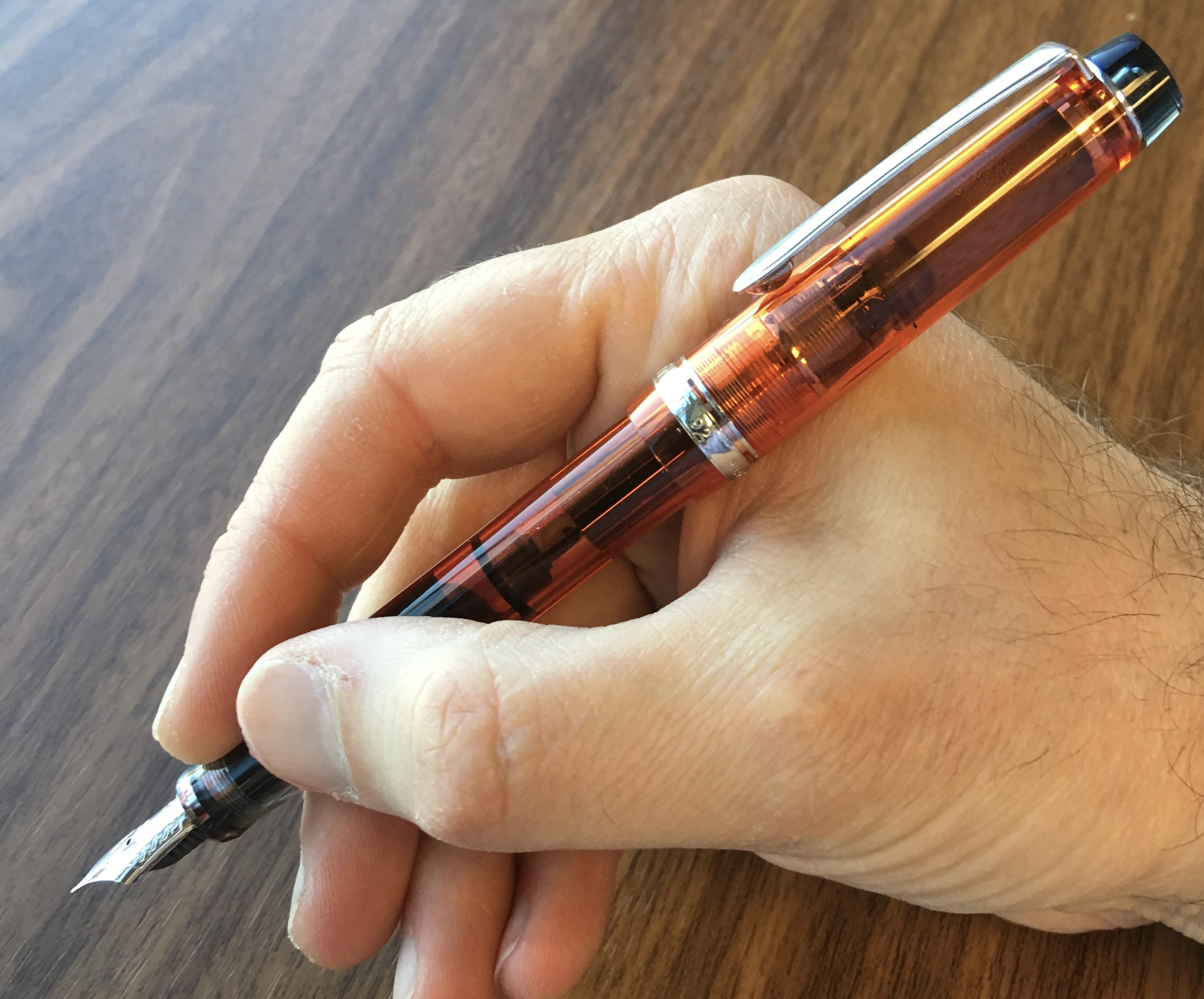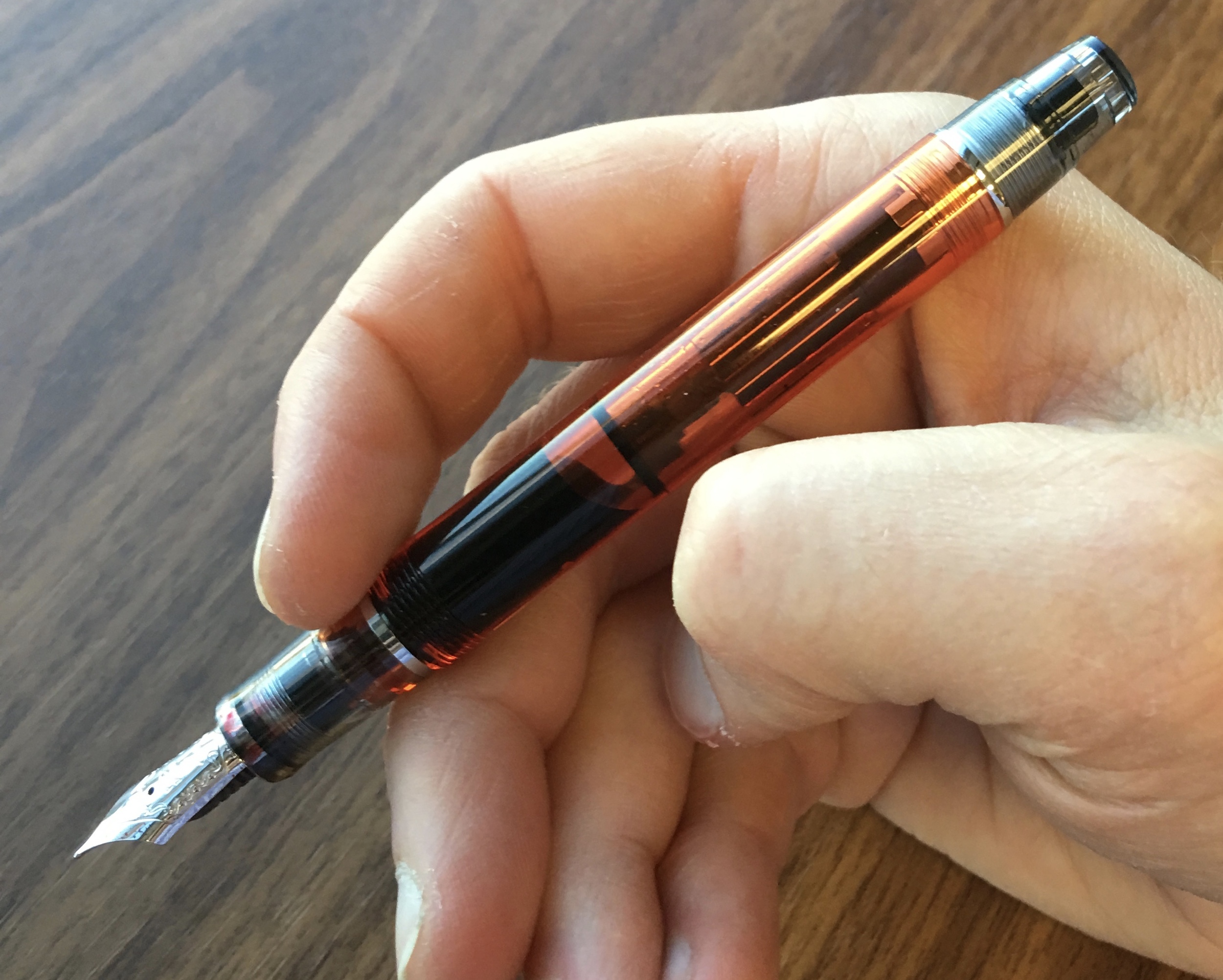I've reviewed a lot of Pilot pens on this blog, but for some strange reason I've never taken the opportunity to review what I consider one of their best, and certainly one of their more accessible, fountain pens. The Custom 74 is one of the first higher-end Pilots that I purchased, and I recently added another to my collection. I'm glad I did!
This blue demonstrator might be one of the prettiest pens in my collection.
Pilot makes several versions of the Custom 74, but only the demonstrators are available on the North American market, to my knowledge. The Japanese market offers some lower-cost pens in solid acrylics, including Dark Blue, Black, Deep Red, and Dark Green. (You can sometimes find these Japanese pens with in-between nib sizes, like SF (soft fine) or FM (fine medium).) Along with the Vanishing Point, you'll often see the Custom 74 marketed as the "entry level luxury" Pilot fountain pen, and it's a great option for those looking to buy their first $150+ fountain pen, or upgrading from a steel nib to 14k gold.
An older photo of the Custom 74 violet demonstrator (far left) that I no longer have. This picture offers a good size comparison of the Custom 74 to the (from left) Pilot Vanishing Point, Sailor Pro Gear Imperial Black, Sailor 1911 Large, Nakaya Portable Writer, and the Pilot Metropolitan.
The Custom 74 is a good size pen, but at the same time there's no excess length or girth, and the transparent acrylic weighs very little. I can use this pen comfortably posted and unposted, though some might find it a touch too long posted. As I mentioned, I've owned two of these colored demonstrators over the years - the blue and the violet - and both pens were stunning to look at. The sapphire-blue acrylic featured here is a personal favorite, and pairs perfectly with Sailor Bungubox Sapphire ink.
I've always found Pilot nibs very tastefully engraved. I especially like the rhodium-plated version.
The Custom 74 color demonstrators feature a relatively stiff, rhodium-plated 14k Pilot nib that offers a super smooth writing experience. I would say these nibs (which come in fine, medium, and broad) correspond more to western sizing, as opposed to traditional Japanese nib sizes that tend to run narrower. The pen shown here has a wet medium nib that writes a fairly broad line for a Japanese pen, but on a brightly colored pen like this one, I prefer a nib that lays down some ink. Fortunately, the Custom 74 comes paired with Pilot's high capacity CON-70 push-button converter, which only works with Pilot's larger pens. (Make sure you check compatibility before purchasing a CON-70 for another pen.)
The Pilot Con-70 converter on the Custom 74, showing the length. Be sure to check compatibility.
A final note on the Custom 74 nibs: these nibs tend to have a lot of tipping material, which make them excellent - and relatively inexpensive - options for nib customization. Before my next pen show, I may try to pick up a couple of Custom 74s with broad nibs to take with me, just to make sure I have a good option to give to Mike Masuyama or Mark Bacas....
The nib on this Pilot Custom 74 writes a nice fat medium line.
Takeaways and Where to Buy
The color demonstrators are by far the most popular options in the Custom 74 line, and are available in transparent blue, orange, smoke, and violet. This pen, in my opinion, is one of the better buys in the fountain pen world at $176 (as of 2023, available directly from us in the T.G.S. Curated Shop). You get an incredibly attractive pen with an amazing nib and a high-capacity converter. For these reasons it's made my list of Best First Fountain Pens over $100. Personally, I think the color models are attractive enough to justify the extra money, especially with the rhodium trim, but it's a matter of personal preference.
The Gentleman Stationer is supported entirely by purchases from the T.G.S. Curated Shop and pledges via the T.G.S. Patreon Program. We no longer participate in third-party advertising or affiliate programs.

